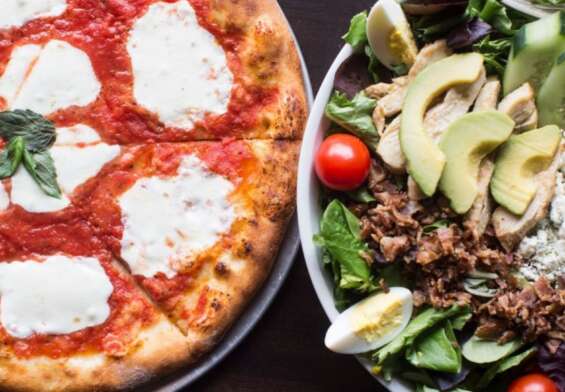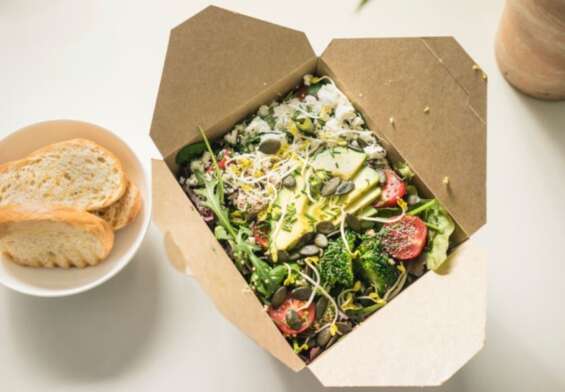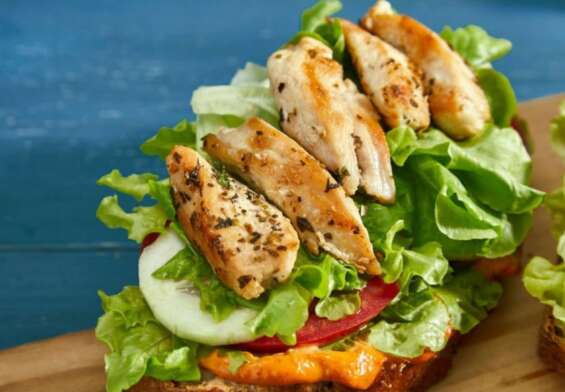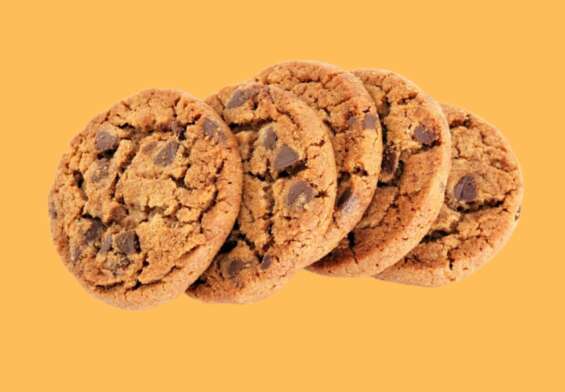
Pescatarian Diet: Guide to a Vegetarian Diet With Fish
The Pescatarian Diet is a type of vegetarian diet that includes fish and other seafood. It is a great choice for people looking for a way to reduce their meat consumption for health, environmental, ethical, or religious reasons. It offers many of the same nutritional benefits as a traditional vegetarian diet, plus the added health benefits of fish. The diet is also an excellent source of lean proteins and healthy fats. This guide will provide an overview of the Pescatarian Diet, including its benefits and tips for following it.
What is a Pescatarian Diet and Why Should You Try It?
A Pescatarian diet is a type of diet that includes seafood but excludes all other types of meat. It’s a great option for those who want to reduce their meat consumption without giving it up entirely. And if you’re looking for a diet that’s full of variety and flavor, you should definitely give pescetarianism a try!
Seafood is a great source of protein, and it’s also low in calories and saturated fat. Plus, there are so many delicious options when it comes to seafood. From salmon and tuna to shrimp and scallops, you can enjoy a wide variety of flavors and textures. And if you’re feeling adventurous, why not try some more exotic fare like octopus or squid?
Pescatarianism also offers plenty of health benefits. Eating seafood has been linked to a lower risk of heart disease, stroke, and certain types of cancer. Plus, it can help reduce inflammation and improve your overall well-being.
So why not give pescetarianism a try? Not only is it delicious, but it’s also good for you. Plus, you can still enjoy the occasional burger or steak without feeling guilty. So why not give it a go and see what all the fuss is about?
The Benefits of Eating a Pescatarian Diet
The pescatarian diet is a fantastic way to enjoy all the benefits of a vegan or vegetarian diet, but with the added bonus of seafood! Here are just a few of the benefits of eating a pescatarian diet:
- You get the Omega-3s: Whether it’s salmon, sardines, or tuna, seafood is a great source of omega-3 fatty acids, which help to reduce inflammation and improve heart health.
- You can still enjoy your favorite dishes: No need to give up your favorite dishes just because you’re not eating meat. With a pescatarian diet, you can still enjoy your favorite dishes, just with a fishy twist!
- You won’t be missing out on the protein: Seafood is a great source of lean protein, so you won’t be missing out on a key macronutrient.
- You get to be fancy: Eating seafood can add some flair to your dinner table. And who doesn’t want to be fancy?
- You can be a sustainable eater: Eating seafood can be a great way to reduce your carbon footprint. By eating sustainably-sourced seafood, you can help ensure that our oceans remain healthy for future generations.
So, if you’re looking for a way to get your health on track, eating a pescatarian diet may be just what you need. Bon appétit!
How to Get Enough Protein on a Pescatarian Diet
Pescatarians, listen up! You may think getting enough protein is a challenge, but it’s actually a piece of cake. Here are some tips and tricks to make sure you’re getting enough of the good stuff:
- Make fish your friend. Fish is a great source of protein, so make sure you’re including plenty of it in your diet. From salmon to tuna, there are so many delicious options to choose from.
- Get cheesy. Cheese is a great source of protein, so don’t be afraid to add a few slices to your sandwiches and salads.
- Start your day with eggs. Eggs are a great way to get your protein in the morning. Poach them, scramble them, or make yourself an omelet – the possibilities are endless!
- Go nuts. Nuts are an easy and delicious way to get your protein fix. Just grab a handful for a snack or sprinkle them over salads for some extra crunch.
- Get creative. There are plenty of other protein-rich foods that you may not have considered, such as tempeh, tofu, quinoa, and edamame. So don’t be afraid to get creative with your meals!
With these tips and tricks, you’ll be sure to get enough protein on a pescatarian diet in no time. Bon appétit!
10 Delicious Pescatarian Recipes to Try
- Grilled Trout and Lemon Salad: This tasty combination of fish and greens is sure to make any pescatarian smile. Grill some trout fillets with a little olive oil, garlic, and lemon juice, then serve over a bed of fresh greens for a light and delicious meal.
- Crab Cake Sliders: These easy-to-make appetizers are a great way to get your seafood fix. Mix together some crab meat, mayonnaise, bread crumbs, and your favorite seasonings, form into patties, and fry or bake until golden. Serve on mini buns with a dollop of tartar sauce. Yum!
- Shrimp Scampi Linguini: Everyone loves a good pasta dish, and this one is sure to please. Sauté some shrimp in butter, add garlic, white wine, and lemon juice, then toss with cooked linguini and Parmesan cheese. This meal is a real crowd-pleaser.
- Baked Tilapia with Herbed Crust: Tilapia is a mild-flavored fish, making it perfect for this recipe. Top fillets with a mix of butter, herbs, and cheese, and bake until the cheese is melted and bubbly. Serve with a side of steamed veggies for a complete meal.
- Saffron-Infused Paella: This classic Spanish dish is a wonderful way to get your seafood fixed. Start by sautéing some veggies in olive oil. Add some saffron, rice, and a variety of seafood, then simmer until everything is cooked through. Serve with a sprinkle of parsley and a squeeze of lemon.
- Smoked Salmon and Cream Cheese Wraps: This easy-to-make snack is perfect for those looking for a light and flavorful treat. Spread some cream cheese on a tortilla wrap, top with smoked salmon, red onion, and capers, then roll it up and enjoy.
- Grilled Salmon with Avocado Salsa: Fire up the grill and make this tasty combination of grilled salmon and fresh salsa. Grill salmon fillets until cooked through, then serve with a side of homemade avocado salsa. This dish is sure to impress.
- Lobster Mac and Cheese: Lobster and macaroni and cheese are a classic combination. Start by making a creamy cheese sauce, then mix in some cooked lobster meat, cooked macaroni, and a sprinkle of breadcrumbs. Bake in the oven until golden and bubbly.
- Smoked Trout and Potato Hash: This filling meal is great for breakfast, lunch, or dinner. Start by cooking some diced potatoes in a skillet, then add some smoked trout, bell peppers, onions, and garlic. Top with a fried egg and serve.
- Spicy Tuna Tartare: This delicious appetizer is sure to be a hit at any gathering. Start by mixing together some sushi-grade tuna, chopped chilies, soy sauce, sesame oil, and lime juice. Serve over crunchy crackers or sliced cucumbers, and top with a dollop of sour cream.
The Best Omega-3 Rich Foods for Pescatarians
Ah, pescatarians. You’ve chosen a life of seafood-filled goodness and are looking for the best omega-3-rich foods to make your meals even more delicious. Lucky for you, there’s a huge variety of omega-3-rich options available to you, from the classic salmon and tuna to more obscure options like krill and mackerel. To make sure you’re getting the most bang for your buck, here are the top omega-3-rich foods for pescatarians.
- Salmon: What pescatarian dinner plate would be complete without salmon? Rich in omega-3 fatty acids, this pink-fleshed fish is a great way to get your daily dose of these essential fats. Plus, it’s a delicious addition to any meal.
- Tuna: Another classic, tuna is a great source of omega-3 fatty acids, as well as being high in protein and low in calories. It’s a great choice for a quick and easy meal.
- Mackerel: A lesser-known type of fish, mackerel is a great omega-3-rich option for pescatarians. Not only is it high in omega-3s, but it’s also an excellent source of vitamin D, which helps keep bones strong.
- Krill: Krill are small, shrimp-like crustaceans that are an excellent source of omega-3s. They’re also a great way to add a unique flavor to your meal.
- Anchovies: This tiny fish is a great source of omega-3s and can be used to add flavor to salads, sandwiches, and other dishes.
- Oysters: Oysters are a surprisingly good source of omega-3 fatty acids, as well as being high in zinc, iron, and other nutrients.
- Seaweed: Seaweed is an excellent source of omega-3s, as well as being packed with minerals and vitamins. It can be used in salads or as a topping on any seafood dish.
So there you have it! There are plenty of omega-3-rich foods available to pescatarians, so no matter what your taste preferences are, you’re sure to find something to enjoy. Bon appetite!
The Best Sources of Vitamin B12 on a Pescatarian Diet
Are you a pescatarian looking to get your daily dose of Vitamin B12? Look no further! We’ve got your back with the best sources on the market.
- Seaweed: Seaweed is a surprisingly good source of Vitamin B12 and can be eaten as a snack or used as a seasoning. Just be careful not to overdo it, because too much seaweed could give you webbed feet!
- Fish: Fish is an obvious source, but it’s worth mentioning because it’s so darn tasty. Whether you’re a fan of salmon, trout, or cod, you can get your Vitamin B12 fix and have a delicious meal too.
- Shellfish: Shellfish such as mussels, oysters, and clams are also great sources. Not only are they rich in Vitamin B12, but they’re also great in soups and stews.
- Fortified Plant-Based Milk: Plant-based milk such as almonds and oat are often fortified with Vitamin B12. So if you’re looking for a dairy-free option, these are a great option.
- Nutritional Yeast: Nutritional yeast is a versatile and delicious ingredient that can be used in a variety of dishes, and it’s also a great source of Vitamin B12. Sprinkle it on your popcorn for a cheesy flavor and extra B12!
No matter which option you choose, you can be sure to get your daily dose of Vitamin B12. So don’t worry, your pescatarian diet doesn’t have to be B12-free!
The Best Alternatives to Red Meat for Pescatarians
Are you a pescatarian who’s looking for an alternative to red meat? Well, you’ve come to the right place! Here are some of the best alternatives to red meat that will make your meals more delicious, nutritious, and much less carnivorous!
First up is fish! For all you pescatarians out there, this one is a no-brainer. Fish is a great source of lean protein and healthy fats, and it’s also incredibly versatile. You can bake it, grill it, fry it, or make it into a delicious fish taco. Plus, it’s a lot better for the environment than red meat!
Next up is tofu. Tofu is the perfect vegetable-based protein for those looking for a meat-free meal. It’s low in fat and cholesterol, high in protein, and it absorbs any flavors you cook it with. You can fry it, bake it, or even make it into a delicious stir-fry.
Seafood is another great alternative to red meat. Clams, mussels, shrimp, and scallops are all high in protein and low in fat. Plus, they are packed with essential vitamins and minerals. So, if you’re looking for a seafood dish, you really can’t go wrong.
Finally, there’s tempeh. Tempeh is a fermented soy product that is high in protein and fiber, as well as vitamins and minerals. It’s also super versatile, so you can use it in any dish from stir-fries to sandwiches.
So, there you have it! Those are some of the best alternatives to red meat for pescatarians. With these delicious and nutritious options, you’ll never feel like you’re missing out on the meaty goodness. Now go forth and enjoy your new meat-free meals!
Tips for Making a Pescatarian Diet Sustainable
- Focus on the “Catarina” part: When you’re trying to make a pescatarian diet sustainable, don’t forget the “Catarina” part! Make sure to incorporate plenty of plant-based foods like fruits and vegetables into your meals.
- Get creative: To make your pescatarian diet sustainable, you’ll need to get creative with your meal planning. Try to mix up the types of seafood you’re eating, and experiment with different types of plant-based proteins.
- Stock up on sustainable seafood: To make sure your pescatarian diet is sustainable, make sure you’re buying seafood from sustainable sources. Look for seafood that is caught or farmed in a sustainable way, and look for labels like “Certified Sustainable” or “Marine Stewardship Council Approved.”
- Be mindful of portion sizes: When you’re eating seafood, try to be mindful of portion sizes. Eating too much seafood can be unsustainable, so try to stick to recommended serving sizes.
- Enjoy yourself: Last but not least, make sure to enjoy yourself while you’re following a pescatarian diet! Don’t forget that eating should be fun, so try new recipes and explore different types of seafood.
How to Eat Out as a Pescatarian
If you’re a pescatarian, eating out can be a challenge. Sure, you can order a salad with no meat, but let’s be real–that’s not the most exciting option. So here’s how to eat out as a pescatarian and still make it a fun experience.
First, do your research. Before you head out to a restaurant, check out the menu online and see what kind of seafood options are available. If there are some tasty choices, you’re good to go!
Next, be creative. Instead of ordering a boring salad, think of ways you can make your meal a bit more exciting. For example, if the restaurant has salmon, ask for it grilled instead of fried. Or if you’re craving something spicy, ask for the seafood to be served with a side of salsa.
Finally, don’t be afraid to ask questions. Most restaurants are more than happy to accommodate special requests, so don’t be afraid to ask for something extra or a substitution. For example, if the menu has swordfish but you’d prefer salmon, just ask the waiter if they can make the switch. Remember, you’re the customer, so you get to pick what you want!
Eating out as a pescatarian doesn’t have to be boring. With a bit of creativity, you can make your meal just as delicious and exciting as any meat eater. So dig in and enjoy!
How to Balance Your Macronutrients on a Pescatarian Diet
Are you ready to rock your pescatarian diet? If you’re wondering how to balance your macronutrients, this is the guide for you. Get ready to crush your nutrition goals and make your taste buds sing!
First, let’s get familiar with the macronutrients. We’re talking about protein, carbohydrates, and fat. These three are the building blocks of your diet. Now, what do they look like on a pescatarian diet?
Protein: Fish and seafood are jam-packed with protein. You can also get protein from eggs, dairy, and legumes.
Carbohydrates: Fruits and vegetables are your go-to sources of carbohydrates. Whole grains, such as quinoa, oats, and buckwheat, are also great options.
Fat: Fat is essential for your overall health. You can find it in avocado, olive oil, nuts, and seeds.
Now that you know your macronutrient sources, let’s figure out how to balance them. Here’s the formula: aim for 40-50% of your calories from carbohydrates, 25-30% from proteins, and the rest from fats.
Here’s an example of a balanced pescatarian meal: grilled salmon with quinoa and a side of roasted vegetables. The salmon provides protein, the quinoa and vegetables offer carbohydrates, and the olive oil drizzled on the vegetables is your source of healthy fat.
You can also combine different foods to make sure you’re getting all the macronutrients you need. For example, a tuna salad sandwich on whole wheat bread with a side of avocado provides a balanced combination of protein, carbohydrates, and fat.
Balancing your macronutrients on a pescatarian diet doesn’t have to be complicated. All it takes is a little bit of planning and creativity. So go ahead and enjoy your delicious, nutritious meals!
The Pros and Cons of a Pescatarian Diet
Pros of a Pescatarian Diet
- You can still enjoy your favorite seafood dishes! From shrimp scampi to fish tacos, there are plenty of ways to get your seafood fixed.
- You don’t have to worry about accidentally eating animal products. With a pescatarian diet, it’s easy to avoid the dreaded “bacon bits” in your salad.
- You’ll get plenty of vitamins and minerals from all the seafood you’ll be eating. Oysters are packed with zinc and salmon is full of omega-3 fatty acids.
Cons of a Pescatarian Diet
- You have to have an iron stomach to eat sushi. Nothing like a little raw fish to get your day going!
- You’ll have to stay away from land-dwelling animals and their products. No more chicken wings or pepperoni pizza.
- You’ll miss out on the occasional delight of a juicy steak. But hey, you can always treat yourself to a lobster dinner!
Conclusion
In conclusion, the Pescatarian Diet is a great option for those who want to reduce their meat intake without giving up their favorite fish dishes. It is a healthy and balanced way of eating that provides a variety of nutritious foods and allows for a wide range of dietary options. With its focus on fish, seafood, and plant-based foods, the Pescatarian Diet can be a great way to improve overall health while maintaining a delicious and varied diet.











